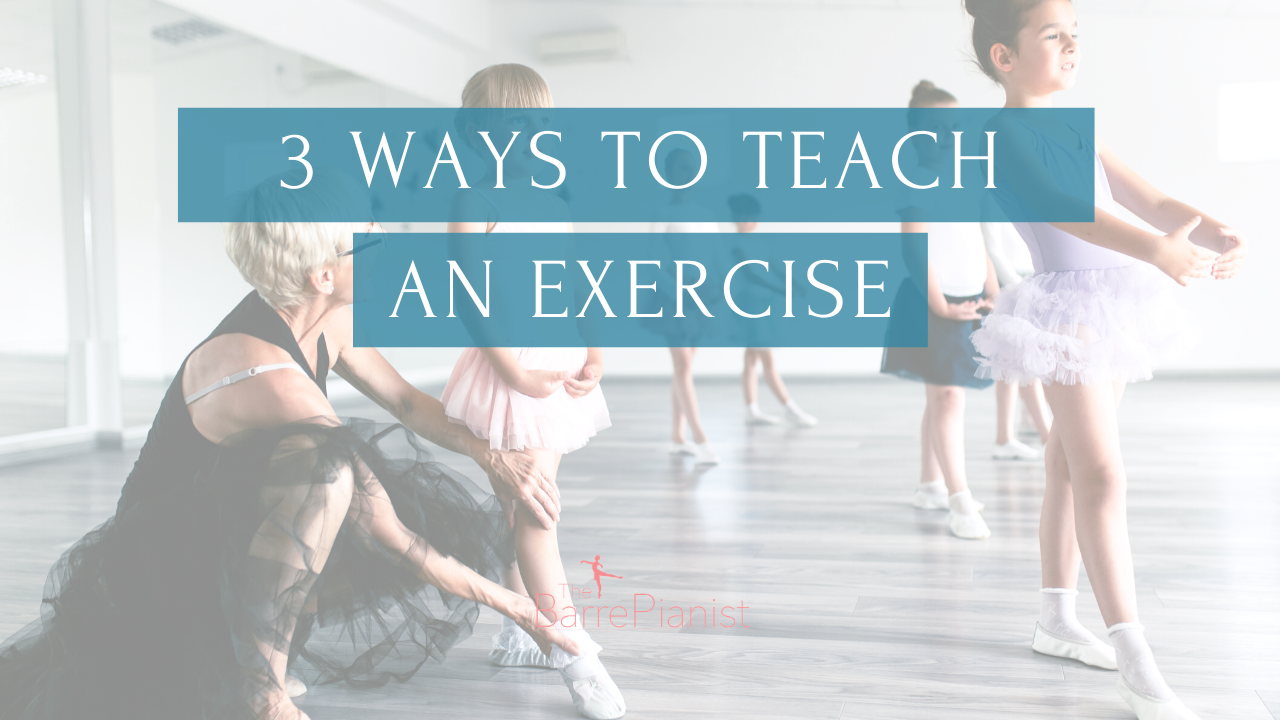
#29: 3 Ways to Teach an Exercise!
Sep 25, 2020People are interesting.. Being a teacher is interesting.. Teaching is interesting..
Do you know why?
Because everyone learns differently!
In the 5 Love Languages (I LOVE THIS BOOK!), the reader learns about how people feel and give love in 1 or more ways. If one lover loves someone in a way that makes no sense to the receiver, they feel no love. They are loved desperately but it's unclear to the receiver because it is not communicated in their 'language'.
Teaching should be done with the same amount of forethought and intention if you genuinely want success for all of your students.
I've noticed this as a piano teacher when I'm teaching a rhythm to a student.
One student will totally get the rhythm with just numbers used.

The next student pays no attention to the numbers I'm counting and persistently plays whenever until I use words that make more sense to them!

Yet others need me to walk while I count it so they can truly understand that the rhythm doesn't stop!
I'm bringing this all up because I want to encourage you to develop your ability to mark your exercises in multiple ways.
3 Ways of Marking
1) Using Numbers
1 and 2 and 3 and 4.... 5 and 6... 7 and 8.
Obviously you're going to have to mark this exercise physically so that your students understand that you want a tendu devant, hold for counts 2 and 3 and close on 4. Then side and close front, side close back.
2) Using Names of Movements
Tendu front and hold and hold close front. Side close front, side close back.
Marking it with these words, in the rhythm you want means that you can teach from a chair if you need to. Knee bothering you? Foot problems? No problem! You can still teach your exercise very effectively using just the names of the movements.
3) Using the Quality of Movements
Press heel forward and stretch toes back. Toes lick the floor, point zip up.
Here you'd need to demonstrate again, but, using quality of movement words subconsciously tells your dancers what you're looking for, quality wise. PLUS, if you have a good vocabulary and know your exercise well, you can teach the rhythm at the same time!
Ultimately, if you can teach your exercise while communicating the rhythm that you want using a collection of these 3 options, you and your dancers will be MILES ahead of other studios!
Implementation Time!
- Design a very simple exercise like I did above! Duple or triple meter, doesn't matter! No longer than 16 counts, be kind to yourself!
- Write it out in the different styles, or at the very least, do it vocally! You'll likely discover that the qualities version is the hardest! Persevere! If you can maintain the rhythm you want using dancer counts, names of movements AND qualities, your students will only benefit!
You've got this, and, in case you're struggling for quality of movement words, here are some options!
- hit, whip, beat, chop, cut, strike, smooth, calm, even, deflate, zip, coil, recoil, twist, stretch, bend, lengthen, rough, strong, tease, etc.
If this was all very interesting but a little over your head, make sure to get on the wait list for the next time The Official Music Training Course for Ballet Teachers opens up!
Stay connected with news and updates!
Join our mailing list to receive the latest news and updates from our team.
Don't worry, your information will not be shared.
We hate SPAM. We will never sell your information, for any reason.

